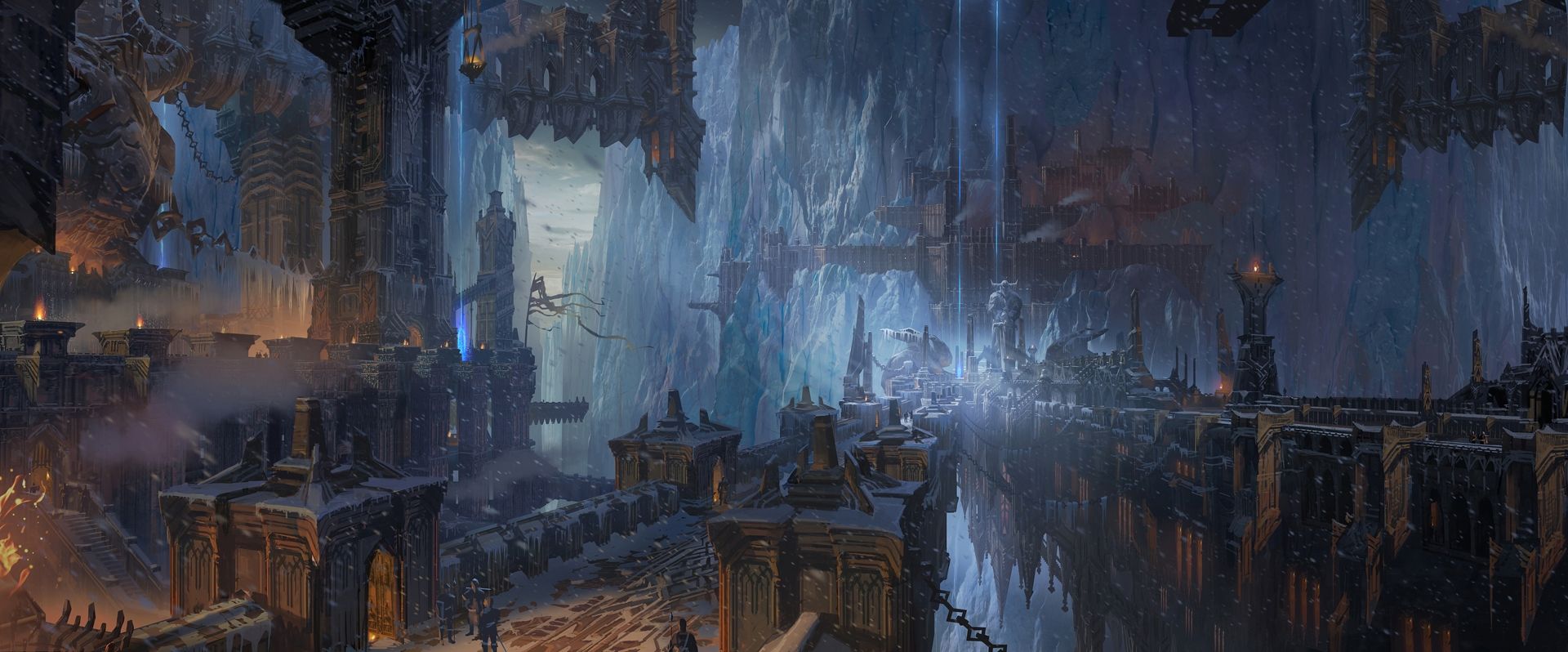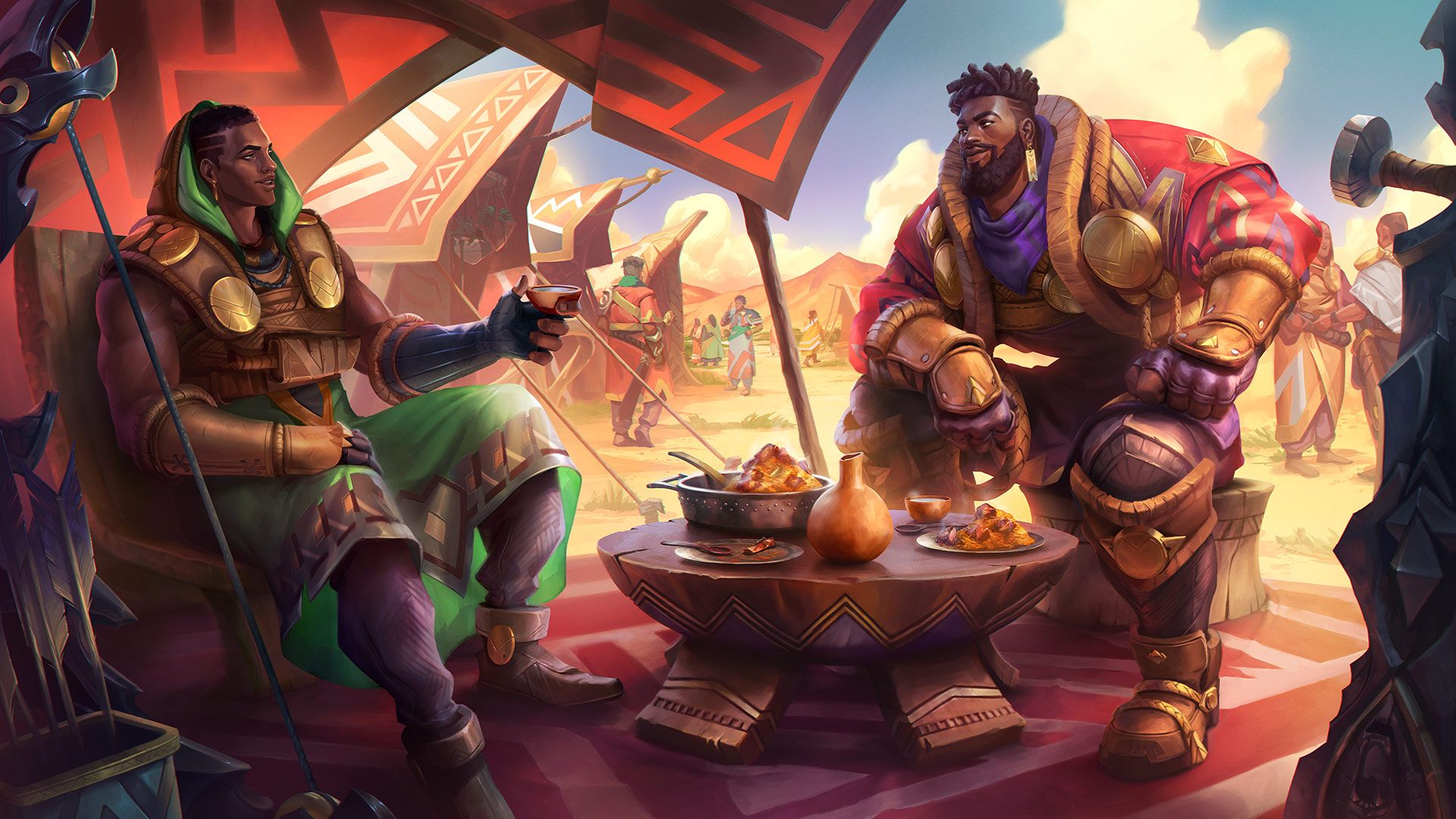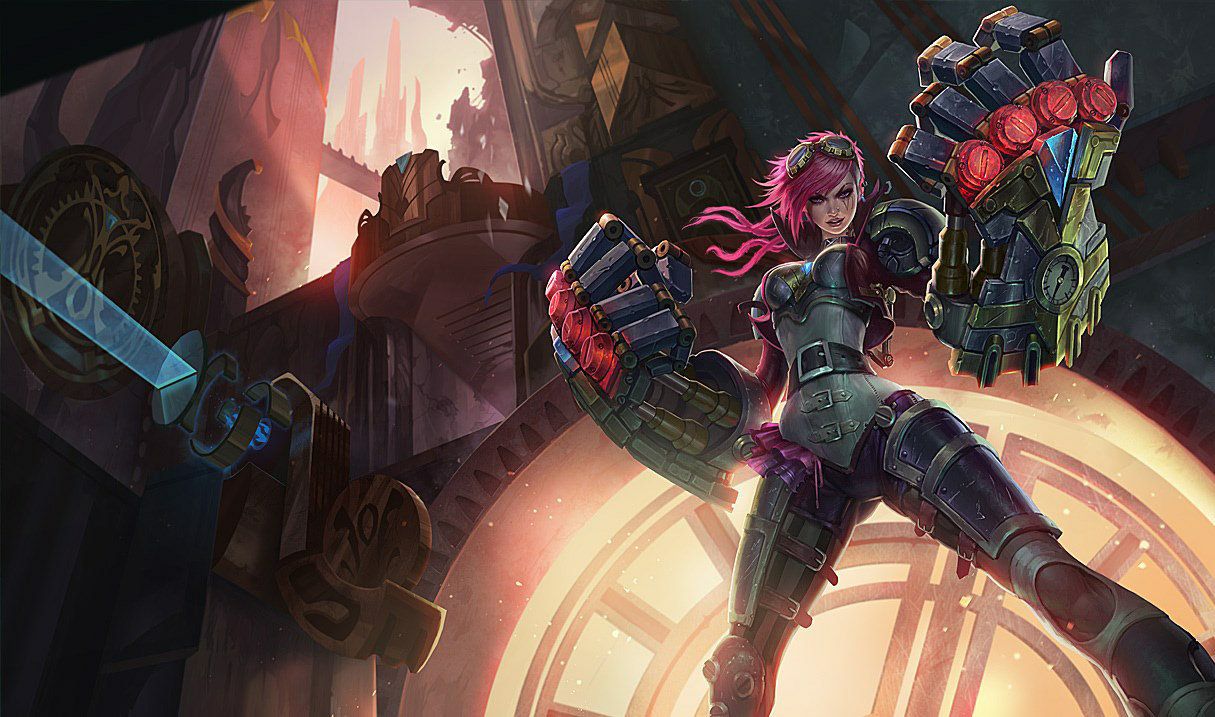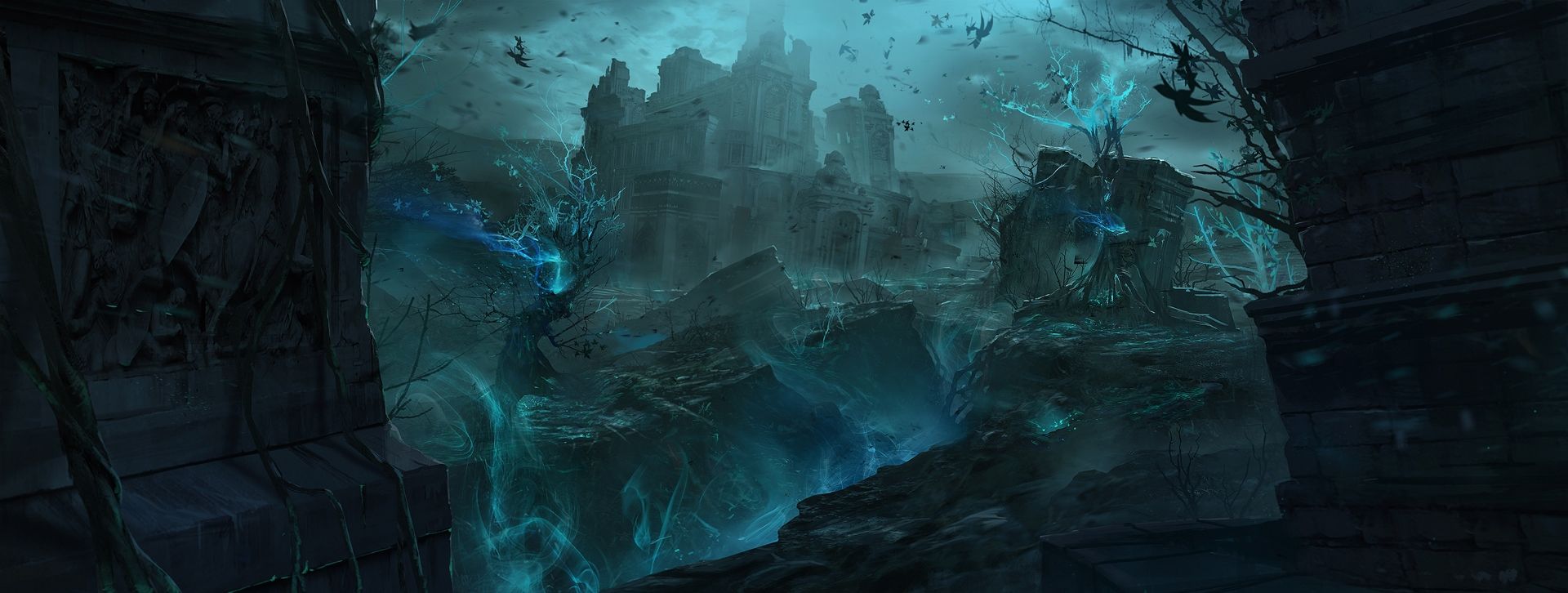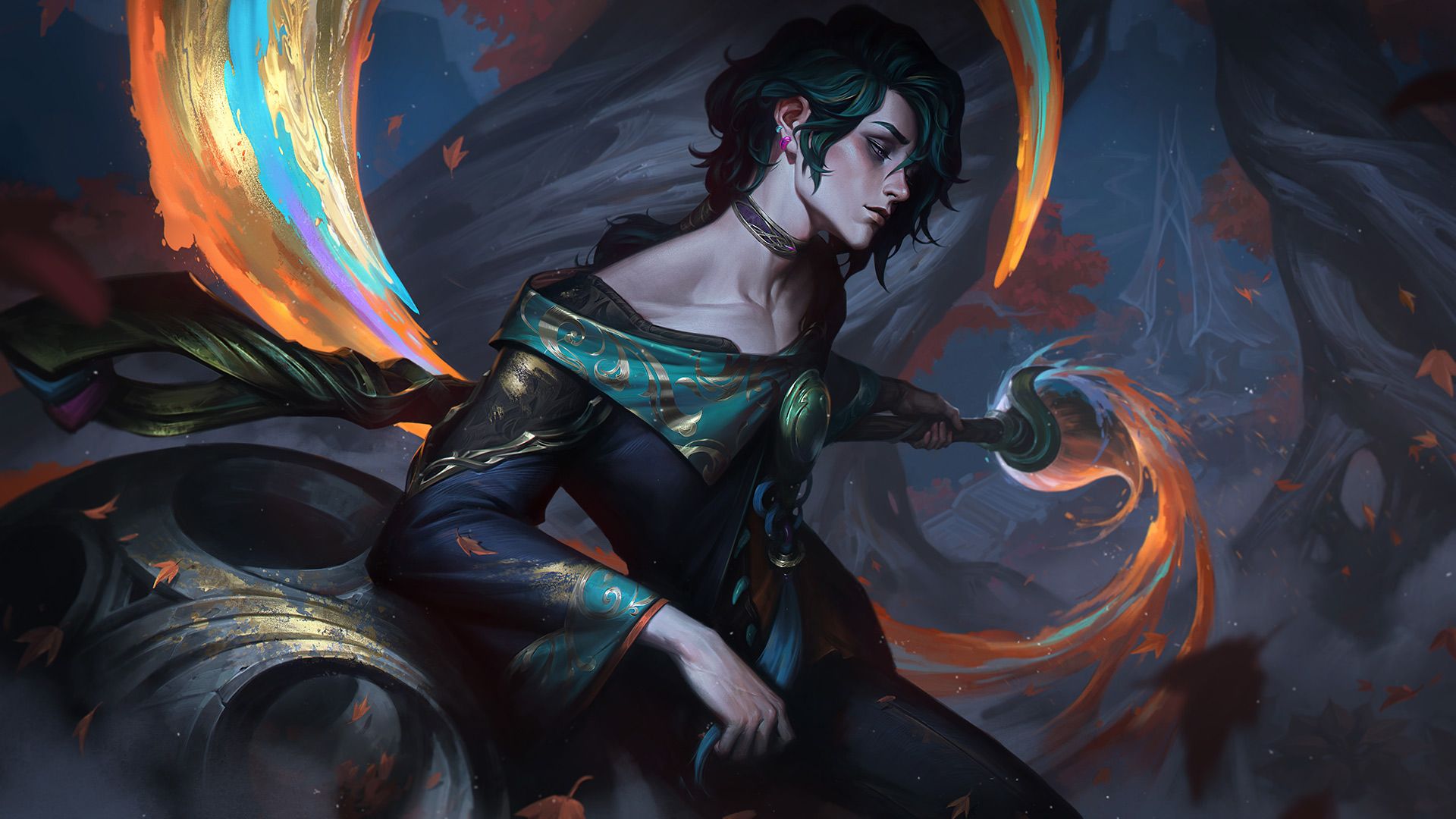
Hwei, the Visionary
“Calm and chaos—leave everything on the canvas.”
- Human
Ionia
In northwest Ionia, the island of Koyehn once stood beautiful and serene. Among its golden sands, seasonal bazaar, and quaint mill town sat the Temple of Koyehn, an ancient and renowned conservatory for the arts.
Lukai Hwei was born to inherit this temple.
Kind and precocious, Hwei spent his childhood putting to canvas his wild daydreams, which exaggerated the world around him into surreal, fantastical sights. He knew these visions differed from reality, but through them, he saw life itself as art. So connected was Hwei to the shades of the world that even his eye color shifted in hue to reflect his mind and mood.
Hwei expressed this vibrant imagination through paint magic, a medium that influenced the emotions of its audience. As such, it required strict control and discipline, lest it overpower both mental perceptions and bodily sensations. Among its current practitioners, those unable or unwilling to control their art endangered themselves and the community—and were banished from Koyehn.
Despite these precepts, young Hwei indulged his imagination. In a demonstration for the temple masters, he recreated Koyehn’s sea. As paint flowed around the canvas, however, his control ebbed. Emotion crashed through him, wild and fathomless as an ocean, and he surrendered himself to its beauty. His vision turned black, his last memory the awestruck masters, drowning.
Hwei awoke days later, surrounded by his masters—alive, but infuriated. They would not exile the temple’s heir, but they stressed his responsibilities. Hwei was horrified—but fascinated—by the depths of his power, and he craved to see more.
Thus, by day, he upheld Koyehn’s conventions. But alone at night, he pushed the boundaries, driven to explore the extent of his power. In time, this practice focused the intensity of Hwei’s imagination, allowing him to manifest a palette that flowed with magical paint.
Well into adulthood, Hwei mastered his craft. And with passion and humility, he prepared to inherit his birthright, surrounded by the respect and affection of his peers. But part of his mind remained forever shrouded at nightfall.
And so it remained, until the temple received a visiting artist: Khada Jhin.
Over a gilded summer, Hwei accompanied Jhin, guiding him around Koyehn. They often exchanged their creative perspectives, and, respecting their differences, Hwei recognized Jhin’s virtuosity and valued their time together.
But the night before Jhin’s departure, the man challenged Hwei. Jhin sensed that the pieces Hwei showed others were forced façades—and he wanted to see a real performance. Hwei tried to deny it, but his eyes betrayed him. Flooded by the years spent creating meaningless art, his imagination begged catharsis.
So Hwei painted. Decades of practice guided his brush. The night came alive, colored by the brilliant infinity of his mind. Emotions washed over him, harmonious and visceral, and Hwei welcomed them. Sharing these forbidden visions for another exhilarated him and illuminated the powers of his art: connection, inspiration, and unfettered creation.
Jhin witnessed all. Afterward, with eyes alight and tone inscrutable, he said farewell, stating he would be moving on tomorrow “to watch the lotuses bloom.”
At dawn, Hwei and his fellow artists awoke to a series of tragedies.
First: four historic paintings, destroyed.
Second: an arrangement of four bodies—the masters that Hwei had almost killed in his youth.
Third: the fiery eruption of the temple’s four lowest floors.
Amid the flames, Hwei imagined the air electric with color. Everything that lived within him bled outward.
It was terrifying. It was beautiful. It was... art. Realizing its dark potential—of destruction, devastation, and torment—Hwei felt the same horror and fascination he had in his youth.
The temple quickly collapsed into ruins, with Hwei emerging as its only survivor.
Exhausted and guilt-ridden, he mourned. Yet his imagination overflowed, reliving every moment of the disaster.
During the day, Hwei and the villagers from the mill town held burials. At night, he revisited the ashen-gray wreckage and painted, his palette taking the shape of Koyehn’s crest—the same worn over his heart.
On one such night, Hwei found the remnants of a trap beneath the rubble—one petaled like a lotus flower.
Realizing who’d wreaked this havoc, a cascade of emotions engulfed Hwei. Fear. Sorrow. Betrayal... Awe.
A question burned within him: why?
But did he want the answer? Or would it be safer to suppress this need? He could stay here with his people—as the heir—help them rebuild... or...
Bearing little more than his paintbrush and palette, Hwei left his island, and his people, behind.
In the time since, Hwei has learned that the answers he seeks arise through revealing the full extent of his art to others. He tracks down nefarious individuals in Ionia’s darkest corners, unleashing scenes of suffering upon them to understand his own well of pain. Yet he also reaches out to Ionia’s victims—fellow witnesses—to create shared tranquility and reflection.
Both the relentless artist rising from the ashes and the kindhearted man from a once-peaceful isle, Hwei faces the conflicting hues of Ionia—and his own imagination. As he spirals deeper into the shadows, he lights a path, mind brimming with possibility.
Which shade of himself will triumph, however, is yet to be seen.

